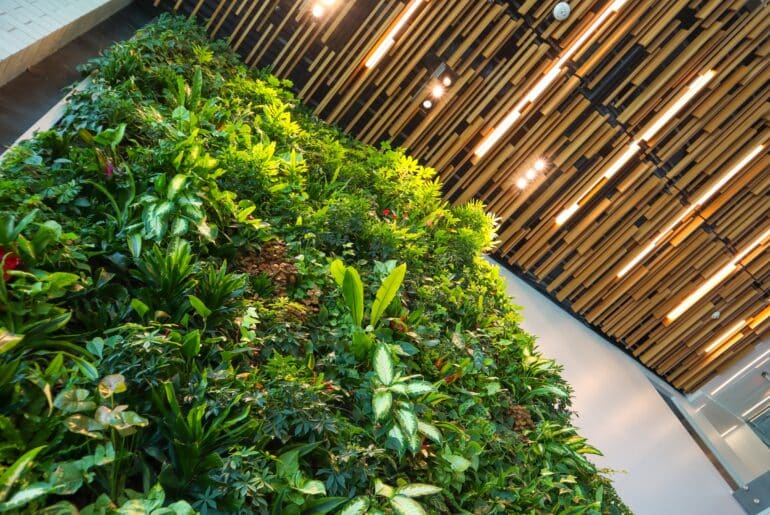In preparation for 2019, you’ve likely already read through comprehensive emerging trends papers from ULI, CBRE, and other industry leaders, and maybe even stok’s Colorado Regional CRE Trendwatch Report.
So, we wanted to take a more casual route for a look forward and tap on members of the stok team to answer the question: What is the future of the built environment in 2019? Here, our interdisciplinary team of sustainability consultants, engineers, designers, and project managers share sound bite insights on what 2019 is shaping up to be all about.
Data Data Data
Now more than ever, we’re equipped with the tools and technology to collect and synthesize data to inform data-driven decisions. Not just in design and construction, but in operations as well. Companies like Comfy and PLASTARC that provide data-drive tech solutions for occupant experience have exploded in the past years, and more projects are shifting toward Monitoring Based Commissioning (MBCx) as an ongoing performance solution by keeping a continuous pulse on comprehensive building data.
This data can be used not just on projects from design through operations, but also to prove the financial case for high performance buildings. This numbers-based approach to our work as an industry helps cut the noise and focus on tangible, effective solutions.
Embodied Carbon and the Trend Toward Mass Timber
2018 was a big year for embodied carbon, culminating in the launch of materialsCAN (Carbon Action Network) – a global group of manufacturers and building professionals committed to prioritizing embodied carbon in building materials – at Greenbuild in Chicago. This industry leadership has begun to shift the conversation beyond operational carbon of buildings to embodied carbon in manufactured materials to eliminate carbon emissions through the entire supply chain.
In parallel, the industry has also been rethinking the structure of buildings, with a renewed emphasis on wood. Mass timber from a responsibly-sourced forest sequesters carbon and can be considered a carbon-negative material. Some mass timber products like cross-laminated timber (CLT) also use more of the tree than typical lumber products as well as can salvage damaged trees that are typically otherwise discarded. And while it was previously thought difficult to achieve impressive heights with a timber structure, a 48-story tower in design in Portland is planning to prove everyone wrong.
This progression makes sense. We’ve shifted our energy sources to renewables, and a move to mass timber shifts our building sources to renewables. As the New Carbon Architecture notes, “it’s a solar-powered carbon sequestration machine.”
Acting on Climate Change with Resilient Design
While we drummed up productive discussion around alarming environmental and consequential urban degradation in multiple highly publicized reports on climate change in 2018, it’s time to move past these conversations and into action. To do this, we need to design for resiliency.
As was mentioned at a recent industry event, “resilience today is what sustainability was ten years ago.” If we think about where sustainable design in the built environment is now, resilient design clearly has potential to rapidly take shape in the coming year and beyond.
As organizations begin to consider sea level rise, higher frequency wildfires, and other environmental stressors that could impact their projects, we’ll see more and more solutions appear through resilient design. Companies and cities are responding with climate action plans; more teams are stress-testing their projects with climate data; and organizations are leading continued conversations around science-based targets and the Sustainable Development Goals and how high performance buildings can help achieve them. With these efforts, the launch pad for a reinvigorated global focus on resiliency is primed.
Disrupting the Status Quo
We work in a team-based industry. It’s collaborative by default, and the limit to creativity is nonexistent. Yet sometimes we get stuck in our routine and fall into a pattern that stifles growth and innovation. To address this, here are a few reminders to embrace in 2019:
1. Question assumptions at a deeper level. It ignites collaboration and leads to exciting outcomes that we never could’ve dreamed of if we’d left our preconceptions about our team’s abilities and project’s potential at baseline.
2. Ditch the fear. In the high performance building world, a lot of decisions are fear-based. All the time, buildings are designed to be easily off-loadable if things get tough. Let’s design instead toward best case scenarios. Injecting projects with optimism and bringing our best minds together will allow teams to come up with optimal solutions and turn them into reality.
3. Embrace vulnerability. Relationships are at the core of everything we as humans are and do. In the business world, it’s crucial to find the balance between traditional professionalism and vulnerability. In building our project teams, be vulnerable. This allows us to step away from the fear of having to know it all and instead emphasize our desire to find people we can have amazing relationships with in our work.
4. Be transparent. As more tools and resources come to market, we’re seeing that they’re often open source. The building industry is moving in a more collaborative, open source direction, realizing there’s more power in solutions. In everything we do, we must be transparent to allow us to all work together effectively rather than in silos.
The Growth of GRESB
When the Green Building Certification Institute joined forces with the Global Real Estate Sustainability Benchmark (GRESB) in 2014, those of us servicing the built environment took notice. It became very clear that the USGBC’s certification body was quickly amassing its global peers under its umbrella. However, the real surprise came in April of 2016 when a small company from San Diego led by an ex-CBRE broker received $7 million in venture money.
That company is Measurabl. Matt Ellis, Measurabl’s CEO, started with a simple data collection tool focused on streamlining the GRESB process. Today, nearly 7 billion square feet of commercial property valued in excess of USD $1 trillion across 70 countries use Measurabl to measure, manage, and report on environmental, social, and governance impacts. As of a few weeks ago, that number was more than doubled in their B round to $18.7 million.
Keeping a Pulse on the Fed
The Federal Reserve Bank of the United States (the Fed) kept rates unchanged today, but what does that mean for the real estate industry this year? The answer is, it’s complicated. Banks who borrow money from the Fed are affected as the borrowing rate is higher. This in turn can raise the rates on all sorts of products from mortgages to car loans. In general, real estate runs on cash flows and the interest rate on debt is a use of cash. When capping or capitalizing those cash flows, the higher the cash flows, the more value.
While the Fed has been steadily increasing rates since late 2015, the direct correlation of those rises to a fixed asset like real estate is about as clear as mud. The general sentiment is that when the Fed raises rates, it means the economy is doing well – when they lower rates, well, you know…
Opportunity Zone Investments
The new tax law under the Trump Administration provided some benefits to the real estate industry. Undoubtedly, Opportunity Zones, economically-distressed communities where new investments can be eligible for preferential tax treatment. They’re designed to spur economic development and job creation in distressed communities.
Investors defer tax on capital gains by investment in either real estate or business located within these economically disadvantaged areas defined by each state. If individuals hold the investment, there are a variety of stipulations regarding when the investment needs to be made and consultations with a tax professional is highly recommended.
This is by no means an extensive list, and we’re excited to continue building upon what else is to come in 2019 and beyond. Regardless, it’s an important time for bold leadership, innovative solutions, and powerful action from our industry. Let’s do this!



